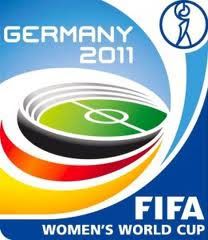 |
"And now for something completely different"
I recently watched the women's soccer world cup final (I hadn't been following it at all, but was with a group of people this past weekend who had, and who wanted to watch this final match). The final game was between the American and the Japanese teams.
It was an interesting game, especially for a neophyte like me. It was funny how many times I called out the commentator's comments by a few seconds on the various moves and maneuvers in the game.
Finally, about half way through the game, I made the call that the Japanese team was vicious and sneaky. The game statistics report here that the overall fouls committed by the Japanese was 51 compared to 72 by the American team. But, the Americans also suffered the most fouls, as I observed during this one game. And my observations on that one match was that the Japanese were more adept at camouflaging their fouls with what looked like normal body contacts. In fact, one replay of a foul showed a vicious, deliberate trip orchestrated by a Japanese player against her American opponent. Of course fouls are deliberate, but I think the Japanese took viciousness and sneakiness up a notch.
These underhanded fouls by the Japanese threw the American players off. The sports commentators seemed intent on reporting the "bad luck" of the American players. I think they were simply stunned by the level of viciousness of the Japanese, and their clever and hidden fouls which they disguised as inadvertent body contacts. This affected the Americans' goal-scoring abilities, and eventually their strategic and tactical moves. The statistics also show that the Americans were ahead with goal attempts 50 to the Japanese 30, which shows the Americans' overall offensive strategy.
I thought the Japanese played overwhelmingly in the defensive mode, concentrating on deflecting American goals by scrummaging to the goal area as the Americans tried to score, which is where the Japanese got most of their offside cards.
There was one American player, Megan Rapinoe, who was undoubtedly aggressive, and who committed fouls and went offside to gain control of the ball, but she acted individually (and narcissistically). She was one of the better players, nonetheless. And she in effect contributed to the team's loss when she finally (fairly) got the "red" card near the end when she could have helped with crucial overtime goals, which could have given the American team its win. Overall, though, the Americans mostly played as a team.
The Japanese played as a team, but they also committed fouls and offsides as a team. As I wrote earlier, they were also more sneaky about their fouls. Many times the referees ignored these fouls (e.g. deliberately barging into an American player) as inadvertent body contacts. But, I begged to differ, from my biased (less-than-perfect) vantage of a TV screen. So, I finally called the Japanese team as underhandedly vicious.
I also noted that the Japanese team looked masculine, despite the shorter stature and smaller bones of the women. Many on the American team looked pretty and feminine, and kept their hair long , which I think can dangerous be on the field, although I don't think that is the reason why these masculinized Japanese players keep their hair short.